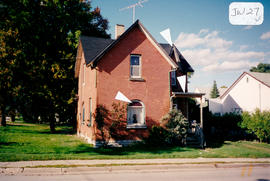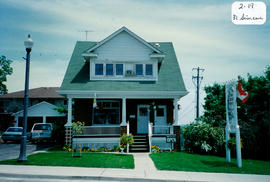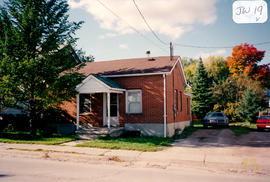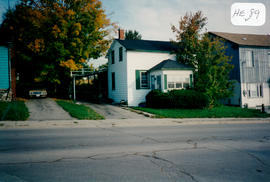- CA BWGPL GJ-HB-2017-03-24-05
- Stuk
- 1995
Part of George Jackson fonds
There was a vacant lot located at 11 Holland St. East after the big fire of 1871. Dennis Nolan built an addition to his Model T Ford dealership (located at 9 Holland St. E.) on this vacant lot. Len Saint used cement to build the new structure and Art Saint did the carpentry. The cars arrived at the railroad station in boxcars and then were brought to this new building. There was a display room at the front. At the rear was another service department with a door on the west side leading to the laneway at the rear. In time, Jim Armstrong and Fred Gregory opened a garage at this location. Charles Roberts also ran it and had a taxi business. Armstrong sold the building to Patchett, who turned the upstairs into a bowling alley (while also still running a taxi business) with a garage in the back. (1, 2)
There was also a vacant lot located at 13 Holland St. East after the fire of 1871. Russell “Curly” Curtis (from Newmarket) married Aileen Church and they built a butcher shop here after WWII. Years later it became the site of the Simpson order office (which was run by Mrs. Fallis). (1, 2)
Zonder titel










